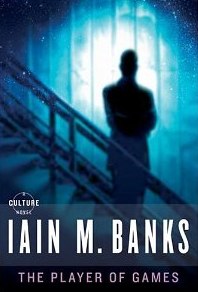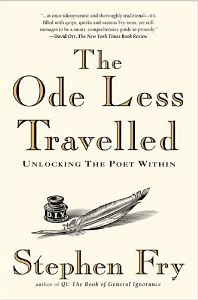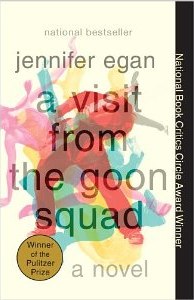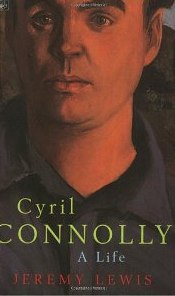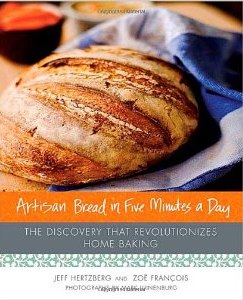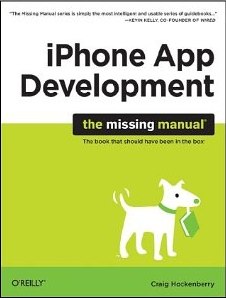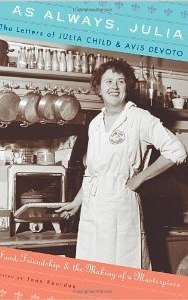I am not generally a fan of cookbooks that promise incredible shortcuts. Preparing food sometimes takes a little time and a little skill, and books that promise wonderful results without effort or expense seldom deliver food worth eating.
But this book has an idea, and it works out the ramifications and consequences of that idea with determination and good sense. The central proposal, simply, is to make one large batch of dough – enough to last two weeks – and store it in the refrigerator, removing just enough to bake a small loaf when you want some fresh bread. From that, everything else follows.
❦
Let’s begin from first principles. Freshly baked bread is much better than bread with preservatives that let it sit on the shelf of your supermarket. Preserved bread, in turn, is better than stale bread. And stale bread is better than no bread at all, or bread that just costs too much.
Our ancestors bought bread from the baker. They didn’t make bread themselves, unless they lived in the middle of nowhere, far from the baker. The reasons were economic: in towns and cities, fuel was expensive and, once the oven was hot, it would bake one loaf or dozens equally well. So, instead of everyone having their own oven, you’d pool together and have one big oven and everyone would share it, or you’d have a designated baker who made bread to everyone.
This is not our problem: lots of Americans have ovens and they don’t think twice about turning it on. Our problem is, nobody has time to mix dough, knead it, let it rise, shape it, let it rise, and bake it. Not every day.
Hertzberg and François address this problem neatly by thinking it through. You make one big batch of dough – enough to last you for two weeks. You keep it in the refrigerator. Two weeks of dough will fit into your refrigerator, and your yeast won’t run out of tasty flour (or catch an infection) in two weeks of refrigerated storage. Every day or two, you grab a handful of dough, shape it, and throw it into a hot oven to bake. The trick is to keep the bread dough on hand, in the refrigerator, all the time.
❦
This wouldn’t work for a commercial baker. First, there’s no point: you’ve got to show up to sell the bread every day, and you’ve got to bake it every day. Mixing is easy enough, and it doesn’t take much labor to watch bread rise. Even if you wanted to use this method commercially, the refrigeration costs would be absurd. Worse, commercial cooking is all about consistency, and holding dough for two weeks is going to lead to gradual changes in the sourness and flavor of each loaf. The method tends to make lots of little loaves, each slightly different, and while that’s a fine thing at home it can be difficult in the store, where Ms. Smith is always going to suspect you’re giving Ms. Wesson the good loaf. Tears will ensue.
The underlying idea – keeping the dough around for a very long time – has a bunch of consequences, which Hertzberg and François work out neatly. To keep it going that long, you need lots of water, and so this dough is very wet – they’re working with hydration that starts at 75% and heads north to the 80’s. All that water, and days (or weeks) of development, means there’s no need to knead if you don’t want to: mix thoroughly and time (and yeast) will take care of the rest. The very slack dough means shaping techniques need to be rethought pretty thoroughly. And small, daily loaves mean shorter baking times (and fresher bread), which will confuse Americans accustomed to weekly groceries.
But the real news here is an approach to bread that is simple and, within limits, consistent. I’ve found that the difficulty of baking bread is wildly exaggerated in any case – at least if you approach your bread with a bit of flexibility and don’t insist that every loaf be identical in every respect. But this approach is incredibly simple: grab a handful of dough, shape it into a ball, let it rest for 20 minute, and bake for 30. You’re done.
My first loaves have turned out pretty well, with excellent crust and promising crumb. Intriguing variations here range from the expected (whole wheat, rye, herb bread) to eyebrow-raising bagels and bialys and pecan rolls.
The book itself is sometimes repetitious, as most recipes repeat the same essential steps with minor variations in dough or shaping technique. It’s written to encourage people who don’t bake, and while this might be a good commercial tactic it doesn’t lead anywhere or give them a hint that there’s more to know. All the measures are by volume, for example, because lots of American cooks are accustomed to that, but it’s the wrong way to do it and the book makes no effort to explain this or to accommodate people who own scales. The authors know this is wrong, and their recipes are all working back from a notional 5oz “cup” of flour, but to find out I had to ask them through Twitter.
March 30, 2011 (permalink)

